Whether you’ve lived in Japan for awhile or you’re planning your next trip, one of the best things to do in Japan is go Sakura Viewing (花見 hanami).
Ephemeral and delicate, these pale pink blooms capture the hearts of all, heralding the return of spring.
So when is the best time to see them, and where are the best places to go? I’ll give you the scoop on Cherry Blossom season and the best places in Japan to see them.
The Significance of Sakura in Japan

Sakura represent new beginnings, youth, and even love.
Spring is when students graduate and start their new lives either by moving up to the next level of school, or by starting new jobs.
Many people move into new apartments, buy new things, and truly start fresh. So it’s no wonder that the sakura backdrop is popular in many manga and anime to signal the start of a new beginning.
But actually seeing them on your trip is all about timing and luck, making Spring one of the most popular times to visit Japan.
If you want to have the ultimate Spring-in-Japan experience, seeing sakura is non-negotiable.
So if you’re coming to Tokyo or Kyoto, here’s what to watch out for, and some of the best places to see sakura this year.
You Can Even Taste Sakura!
In addition to being aesthetically pleasing, sakura flowers have a unique flavor. They have a light floral scent, similar to a rose.
During ceremonies like graduations, students are given sakura “tea” made from pickled sakura petals. It’s like sipping warm ocean water with a hint of florality.
But most cafes and restaurants will feature much tastier offerings like sakura-themed donuts, drinks, desserts, and mochi.
Sakura mochi is a popular traditional snack that comes in two forms. Kanto style is made with rice flour to form a cute roll filled with red bean paste. The Kansai version uses coarser rice flour and pickled sakura leaves as its wrapping.
Either way, you won’t be disappointed by the selection of sakura-themed treats in Japan during spring.
When do Sakura Bloom?

Cherry blossoms typically bloom from about mid-March to April, with variation throughout the country based on things like weather conditions and how cold Winter has been.
Sakura also have different levels of bloom. “First Bloom” means five to six flowers have bloomed on observation trees, while “Full Bloom” is indicated by at least 80% of flowers having bloomed.

In 2024, according to The Cherry Blossom Forecast, the mild Winter conditions and “slightly warmer than average” days forecasted for mid-March meant that cherry blossoms were supposed to bloom about a week earlier than previous averages.
However, in practice they bloomed later than expected. During our visit to Tokyo, they didn’t come into full bloom until the first week of April.
So, take early predictions with a grain of salt, as many factors play into bloom times. Regardless, you can usually still enjoy some blooms here and there as March ends.
You can check the JMC’s Forecast in addition to the Sakura Weathermap’s to get a good idea of the timing for each region of Japan.
2025 Sakura Viewing Dates From North to South:
Sapporo 4/25
Sendai 4/5
Niigata 4/7
Tokyo 3/21
Nagoya 3/25
Osaka 3/26
Fukuoka 3/20
Popular types of Sakura
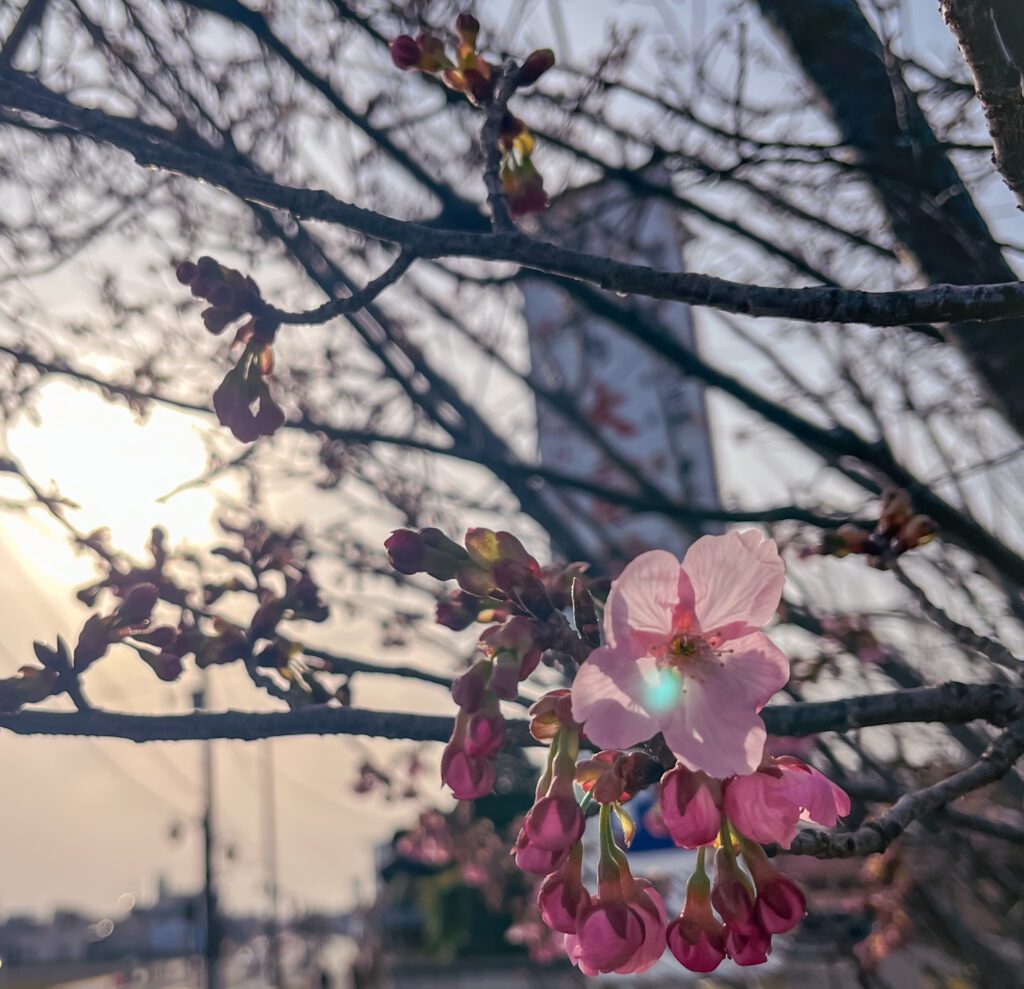
Conventionally, Somei-Yoshino and Yamazakura trees are abundant along sidewalks and in temples and shrines.
Weeping Sakura trees are another delightful variety you may see, especially in Ueno Park.
Their dramatically drooping limbs similar to that of willows and wisteria trees are gorgeous with full sakura blooms.
And of course, if you plan to visit Japan a little later in the season, you can try to plan your sakura viewing by region. Since Northern Japan is colder, the cherry blossoms bloom later in areas like Sapporo and Sendai.
Best Places to go Cherry Blossom Viewing

Tokyo Area
While you can see cherry blossoms in bloom all around the city, there are some particularly great spots to view them.
Public parks, rivers, and temples are great areas to find bountiful sakura.
Shinjuku Gyoen (Cherry Blossom Area)

This gorgeous park just Northwest of Meiji Jingu Gaien was originally a garden made for the imperial family.
However it is now a widely used public park with abundant natural features.
Seeing the sakura at Shinjuku Gyoen is incredibly popular – but its popularity means many people attend.
Reservations are required for the most popular dates for cherry blossom viewing at the garden: March 23-24th, 30-31st, and April 6-7th from 10am-4pm.
However, the park is open to all from 9am-10am, and 4pm-5:30pm those days.
You can find the reservation info here (Japanese). And here (Japanese) is the reservation page itself.
Sumida Park
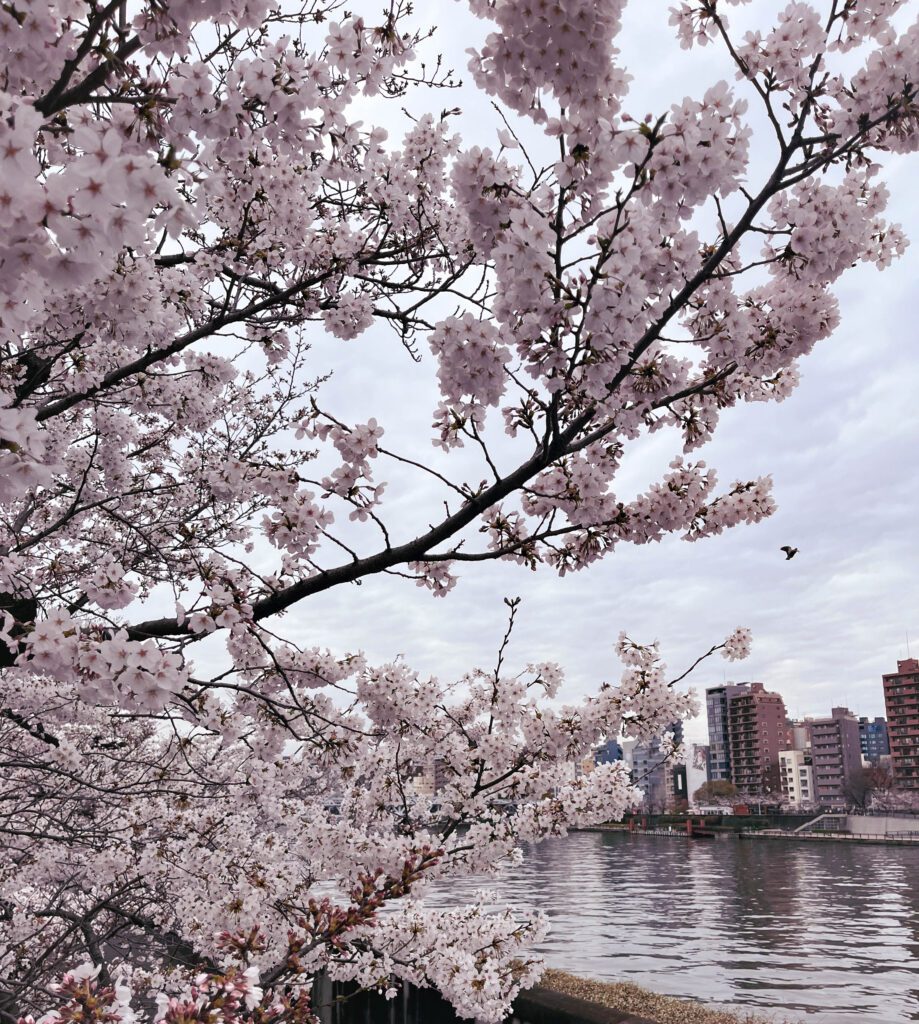
About 15 minutes walking from Asakusa, Sumida Park is an eminent cherry blossom viewing site along the Sumida River.
It’s also not far from where we lived during our study abroad time!
There is a Sakura Festival just about every year, and admission is free.
Both weeping cherry trees and Somei-Yoshino cherry trees are featured at this park, which boast lots of blossoms per tree, and are bloom earlier.
Sumida Park also boasts a beautiful Plum Blossom Festival event earlier in the Spring, and several other floral events.
Ueno Park
Touted as the first Urban Park in Japan, Ueno Park celebrated its 150th year anniversary in 2023. It’s a wonderful, free public park.
It’s a sprawling park with lots of space to walk, picnic, and see the cherry blossoms bloom. Its mascot is even a cherry blossom named “Uenon”.
Since many vendors set up shop, you can walk Ueno Park’s paths and explore its shrines while enjoying the sakura.
You can even find a spot to take part in flower viewing with a picnic blanket, friends, and drinks.

Kyoto Area
Kyoto is famous not only for its rich culture and shrines, but for its delicate and beautiful Sakura blossoms.
When we visited in 2018, we were lucky enough to be on time for some of the most beautiful blooms.
Kodaiji Temple
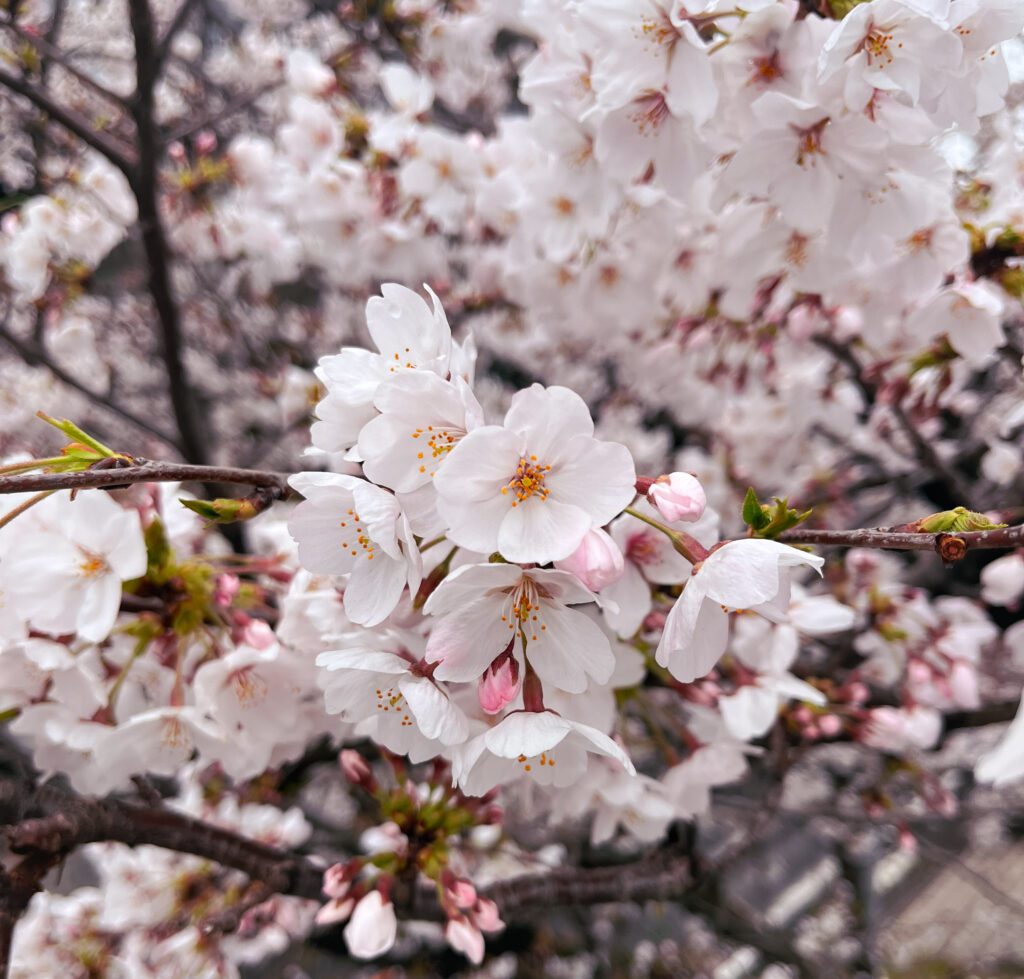
Another popular temple for seeing the sakura, admission to Kodaiji is only ¥600 (~$4.00) for adults.
Its garden in particular is designated as a historical and scenic site.
While they put up illumination at all times of the year, their backlit cherry trees are especially beautiful in the Spring.
Their nighttime hours run from 5:00-9:30pm, where you can see their gorgeous cherry trees in bloom.
Nijo Castle

With gorgeous weeping sakura trees accentuating this historic estate, Nijo Castle is a gorgeous place to get a few steps in while seeing the blooms.
Built in 1603, Nijo Castle was finished under the order of Tokugawa Ieyasu. And though most of the cherry trees there are only about 75 years old, some were planted as far back as 1978.
The castle hosts a Cherry Blossom Festival annually and includes Yamazakura, Somei-Yoshino, and Satozakura cherry trees.
At night they also illuminate the trees, creating an ethereal effect.
General admission to the park costs ¥800, but the festival can cost double, around ¥1600.
Toji Temple
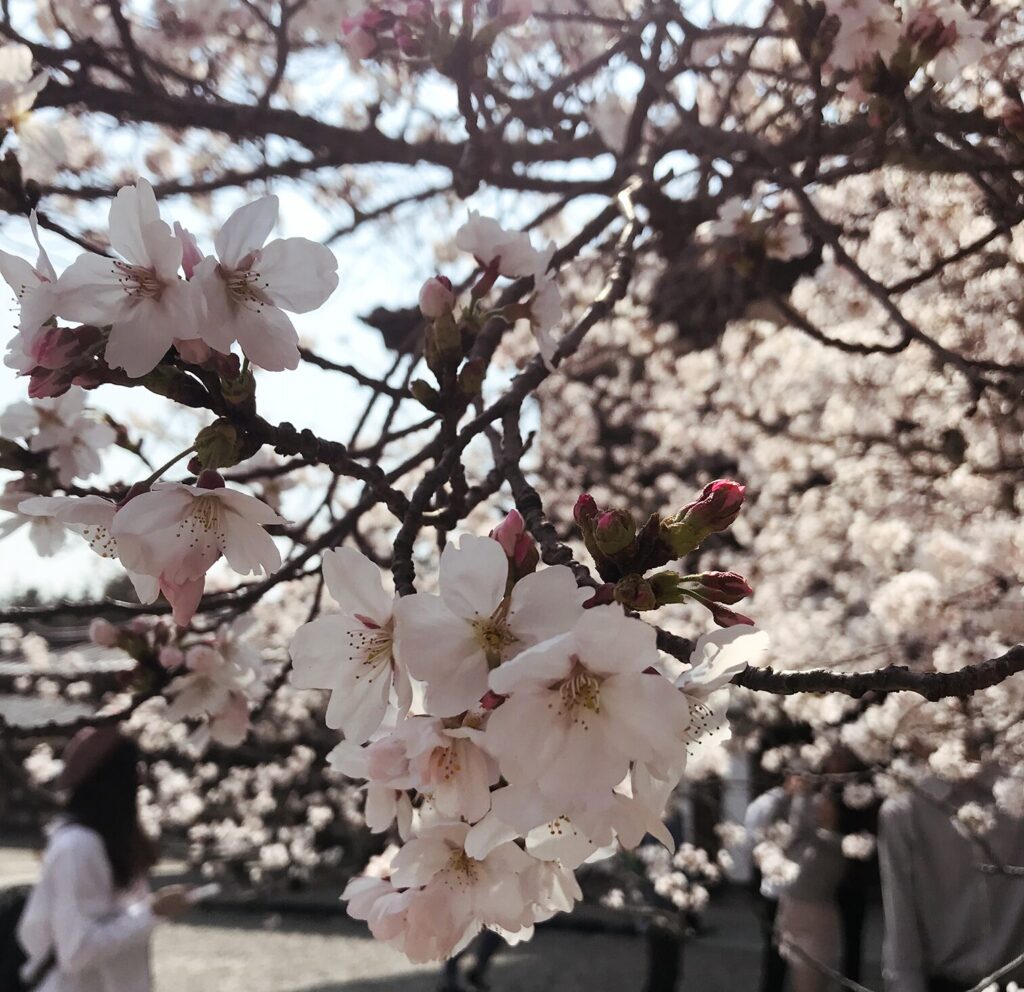
Toji Temple is another famous temple whose cherry blossoms are a sight, especially at night.
They illuminate the trees, resulting in a celestial atmosphere amongst the Buddhist architecture.
Interestingly, the Cherry trees planted there were planted by piling dirt since the holy grounds cannot be excavated.
Cherry Blossom Viewing Admission to the temple is ¥500 per adult (~$3.50) from 6:30-9:30pm. It includes the Kondo and Kodo Halls, as well as the cherry blossom garden walk.
Shizuoka Area
Gotemba Peace Park

Gotemba Mt. Fuji Peace Park is situated on a hill across from Mt. Fuji. If you’re going to Shizuoka, I highly recommend giving it a go.
Its views are gorgeous, and as a plus, it features many beautiful sakura trees. It also has many other plants and flowers.
The park is home to the Nipponzan Myoho Temple and many international Lion-Dog Statues. While you’ll need a car or bus to access this park, it’s admission is free.
Hakone CraftHouse
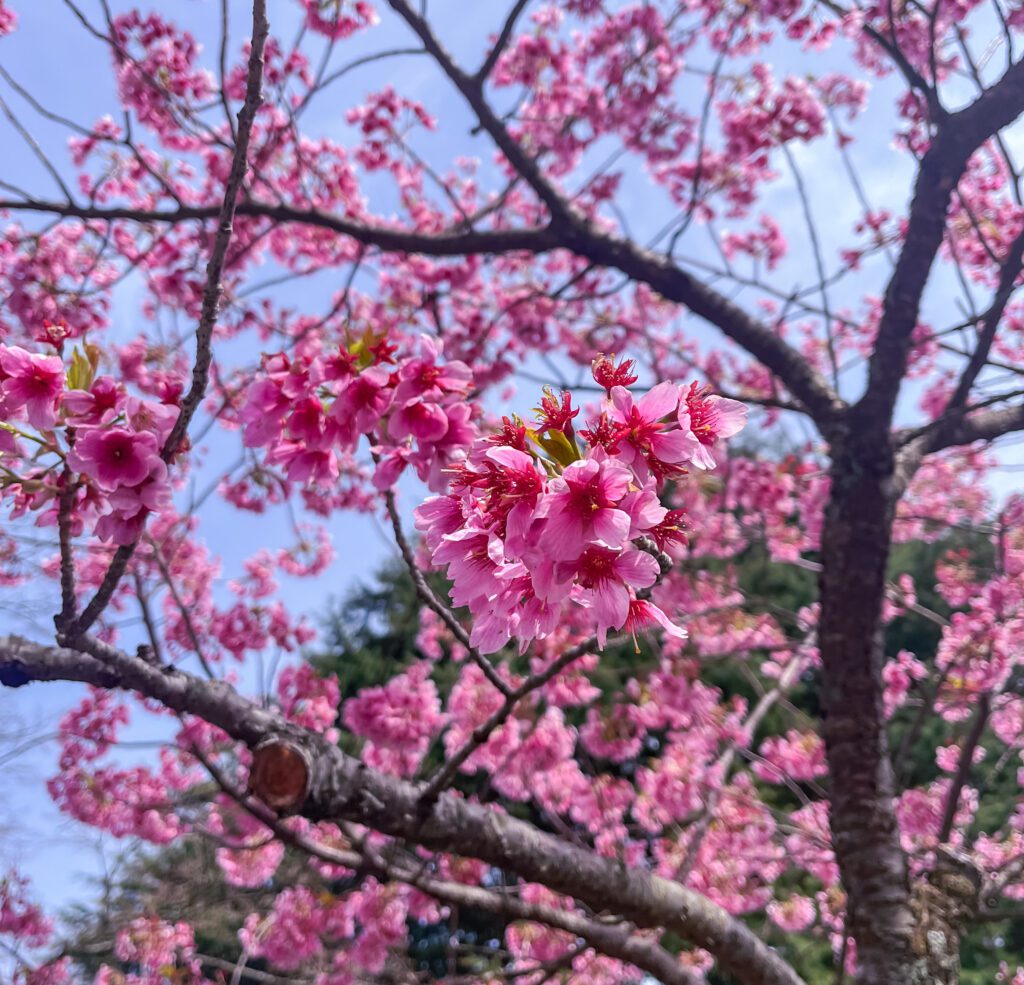
Hakone CraftHouse and its encapsulating Gora Park are a unique feature of Hakone.
It has a well-kept garden with many different types of plants and a central water fountain.
While its main draw is hands-on experiences like kiriko glass cutting and ceramics classes, it’s also a beautiful place to see sakura.
Admission is ¥650 per adult, or free if you have the Hakone Free Pass.
Other Blooms Worth Seeing
In Japan, cherry blossoms aren’t the only bloom worth seeing in Spring.
One of my favorites are actually the darker pink Plum Blossoms (梅の花 ume no hana). They are typically richer in color, and bloom earlier than sakura– around January to March

And Peach Blossoms (桃の花 momo no hana) are another popular bloom, whose petals come to a sharper point than plum blossoms.
You might even see apricot flowers, which are similar to plum blossoms.
Of course, the most coveted are the sakura, which come in pale pinks and have signature forked petal tips.
But no matter which type you see, all of these pink blooms are sure to delight!
Meguro Sky Garden

Located in downtown Meguro, the aptly named Meguro Sky Garden has a variety of gorgeous blooms.
They even have a pamphlet showing which flowers bloom during each season. While they don’t specialize primarily in sakura, its peach and plum blossoms are beautiful.
Access is free, and the rooftop is accessible from the local library and nearby stairways and elevators.
Viewing Sakura in other Areas

When I studied abroad in Japan, we lucked out during sakura season. On our group trip to Kyoto, the blossoms were in full bloom, and almost every temple, castle, and frankly every street had sakura trees.
From Heian Jingu Shrine to Nijo Castle, and Todaiji Temple in Nara, every locale was bursting with blooms. It was unforgettable.
If you have the chance to see these amazing, historical places with sakura in bloom, I can’t recommend it enough.
That said, we had no idea it would be cherry blossom season at the time.
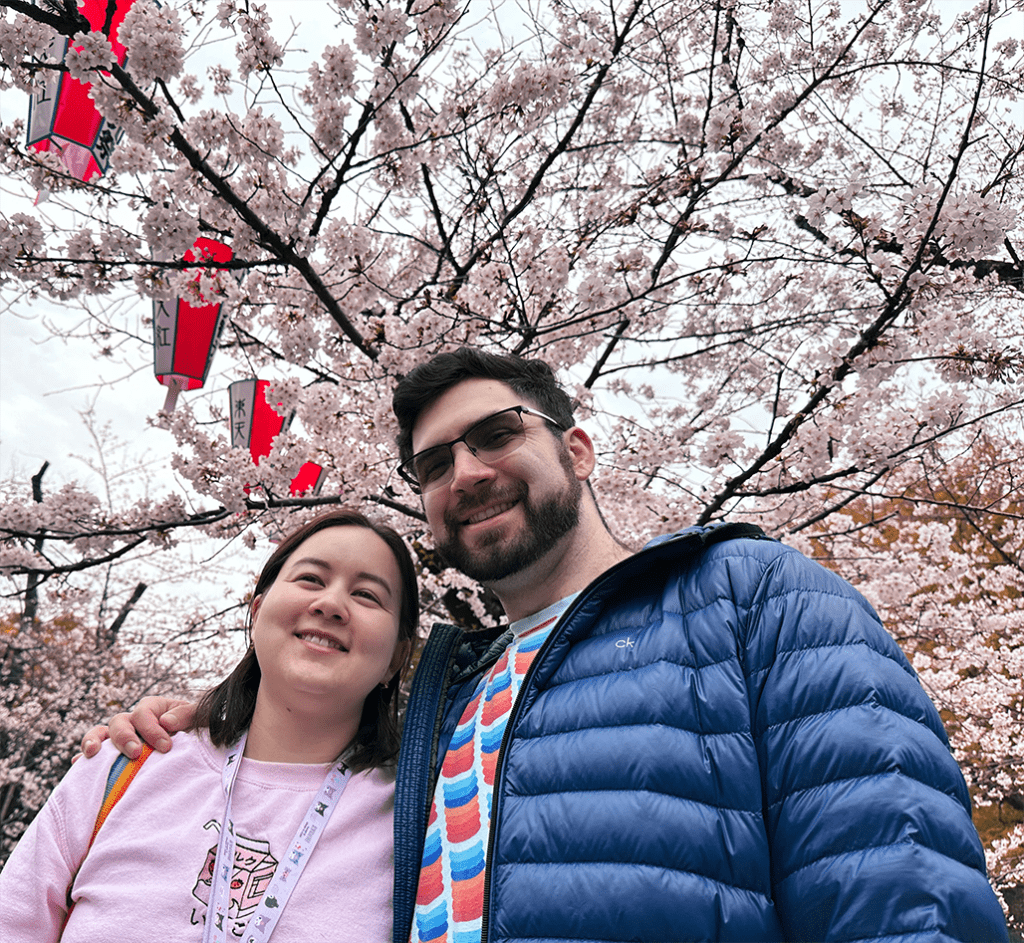
Since weather conditions can effect the timing of the blooms, there’s no sure-fire way to plan for it if you’re planning far in advance.
Most forecasts come out around the end of January, which can be too late for some travelers to make their itinerary.
But if you aim for the end of March into early April, you certainly have a chance at seeing the cherry blossoms.

All in all, the stone fruit blooms are majestic, and even some Japanese people can’t tell them apart easily.
Plus, the mix of rich and light pinks makes the viewing experience even more special in my opinion.
So if you can, try to see the beautiful sakura season in Japan, and enjoy flower viewing with your friends and family this year!
And if you’re craving other natural features of Japan, check out my blogs about Exploring Ashikaga Flower Park and 5 Things to do in Nikko!

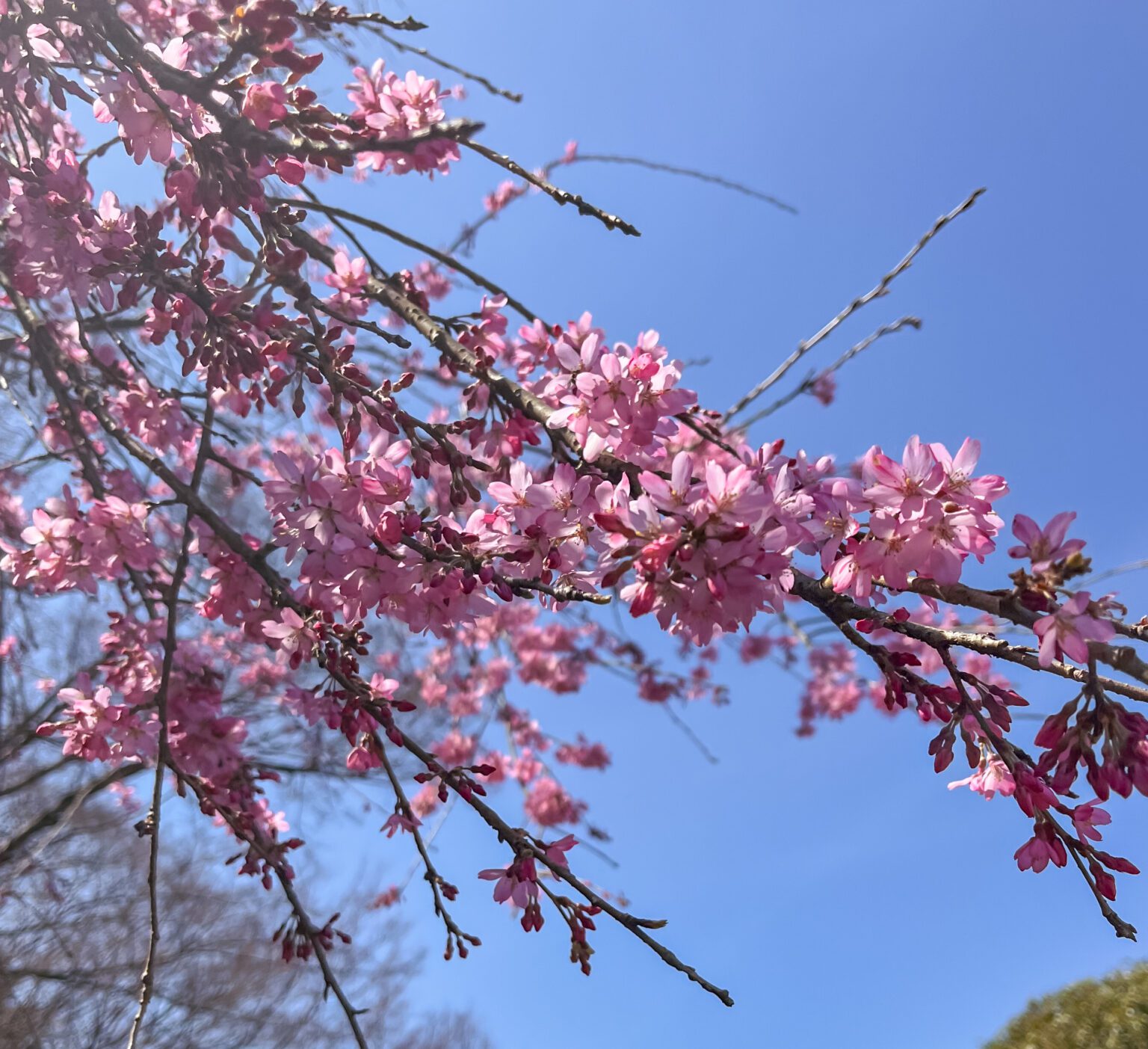
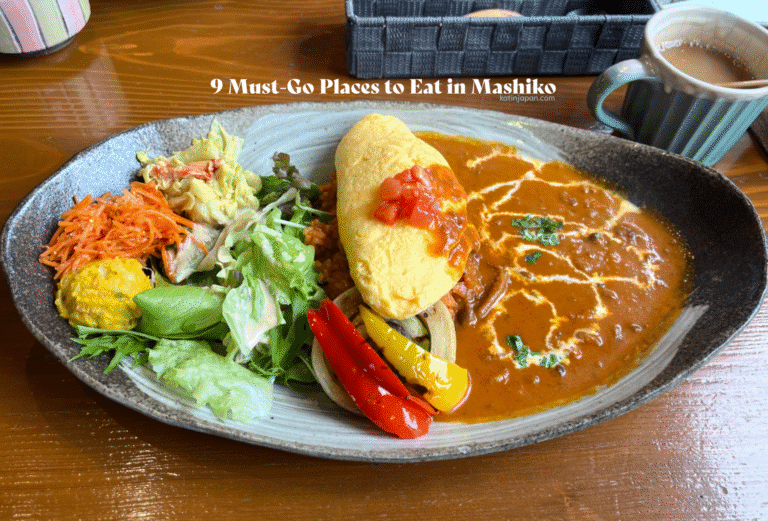
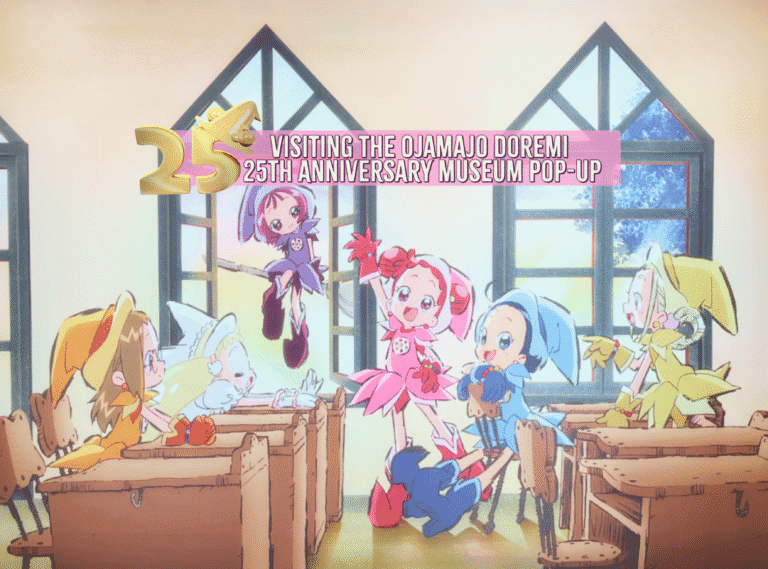

[…] crowds flock to Tokyo or Kyoto for peak cherry blossom season in late March, the town of Matsuda quietly comes alive with pink […]
[…] crowds flock to Tokyo or Kyoto for peak cherry blossom season in late March, the town of Matsuda quietly comes alive with pink […]